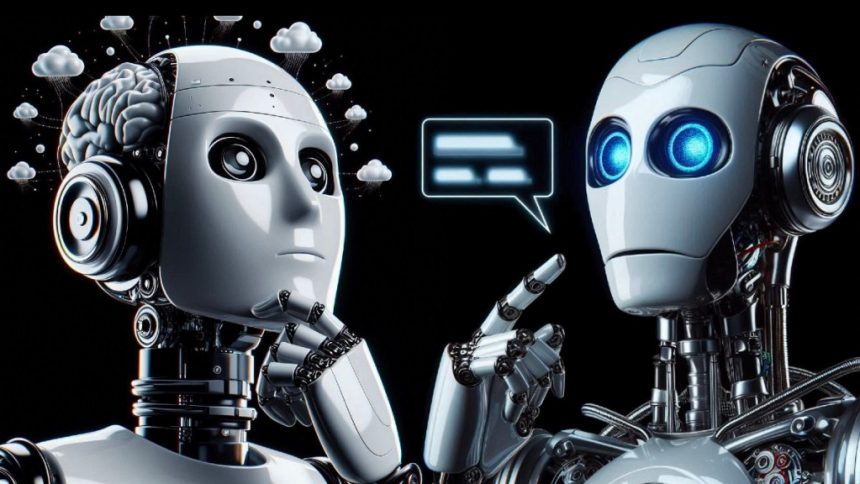Revolutionizing AI Agents: Google DeepMind’s Talker-Reasoner Framework Balances Intuition and Logic
In the evolving landscape of artificial intelligence, researchers continue to grapple with the complexities of creating agents capable of executing a variety of tasks with different reasoning and planning demands. The ideal AI agent would know when to rely on swift instincts and when to engage in deeper analytical thinking. However, achieving this balance remains a significant challenge in AI development.
In a groundbreaking paper recently published, engineers from Google DeepMind introduce the Talker-Reasoner, an innovative framework that aims to merge intuitive and analytical processes in AI systems. Drawing inspiration from the “two systems” model of human cognition, this dual-component system promises an enhanced user experience by seamlessly blending different reasoning styles.
Understanding Human Cognition: System 1 and System 2
The two-systems theory, advanced by Nobel Prize-winning psychologist Daniel Kahneman, outlines how human thought processes are governed by two distinct systems. System 1 operates swiftly—it’s instinctive, automatic, and handles immediate reactions, such as recognizing familiar faces or responding to sudden changes. In contrast, System 2 is slower, more deliberate, and engages in complex problem-solving and strategic planning.
These systems are not isolated; they interact continually. System 1 generates initial impressions and intuitions, while System 2 thoughtfully evaluates these prompts, allowing individuals to navigate everything from daily routines to intricate challenges effectively.
Currently, most AI systems predominantly function in a System 1 capacity, excelling in tasks that require rapid input and pattern recognition. However, they often lag in scenarios that necessitate the structured reasoning and strategic foresight characteristic of System 2.
Exploring the Talker-Reasoner Framework
DeepMind’s Talker-Reasoner framework presents a solution to this ongoing dilemma by endowing AI with both System 1 and System 2 capabilities. This framework bifurcates the AI agent into two main components: the Talker and the Reasoner.
-
The Talker acts as the quick, intuitive interface akin to System 1, managing real-time user interactions, interpreting language, and generating conversational responses. Utilizing the in-context learning abilities of large language models, it adeptly engages with users.
- The Reasoner, embodying the thoughtful nature of System 2, is responsible for performing complex reasoning and planning tasks. By accessing external data sources and updating its understanding based on fresh information, the Reasoner shapes the agent’s beliefs and assists the Talker in refining its responses.
Both components communicate through a shared memory system, where the Reasoner continuously updates its findings, and the Talker retrieves this information to enrich conversations. This asynchronous model ensures that users experience a smooth dialogue flow, while the Reasoner processes extensive computations in the background.
As the researchers succinctly put it, “The Talker agent focuses on generating natural and coherent conversations… while the Reasoner updates beliefs that inform the Talker.”
Practical Applications: AI Coaching and Beyond
The Talker-Reasoner framework has already been tested in applications such as AI coaching for sleep improvement. In this context, the Talker engages users empathetically through conversational exchanges, while the Reasoner maintains an understanding of the user’s sleep habits and goals. Through this collaborative effort, the AI coach offers tailored recommendations based on the user’s individual circumstances.
The versatility of this framework suggests potential applications across diverse fields, including customer service and personalized education, where a mix of instant responses and thoughtful guidance is essential.
Future Directions in AI Development
Looking ahead, the researchers at DeepMind have identified several areas for further exploration. One proposed avenue is to optimize the interaction between the Talker and the Reasoner, allowing the Talker to discern autonomously when to consult the Reasoner, thereby enhancing efficiency by reducing unnecessary computations.
Additionally, expanding the framework to incorporate multiple Reasoners, each specialized in various domains of knowledge, could empower AI agents to tackle more complex tasks and provide richer, more nuanced assistance.
As the AI landscape continues to mature, the Talker-Reasoner framework marks a significant step towards creating more sophisticated and human-like agents capable of understanding and addressing a wider array of user needs.



